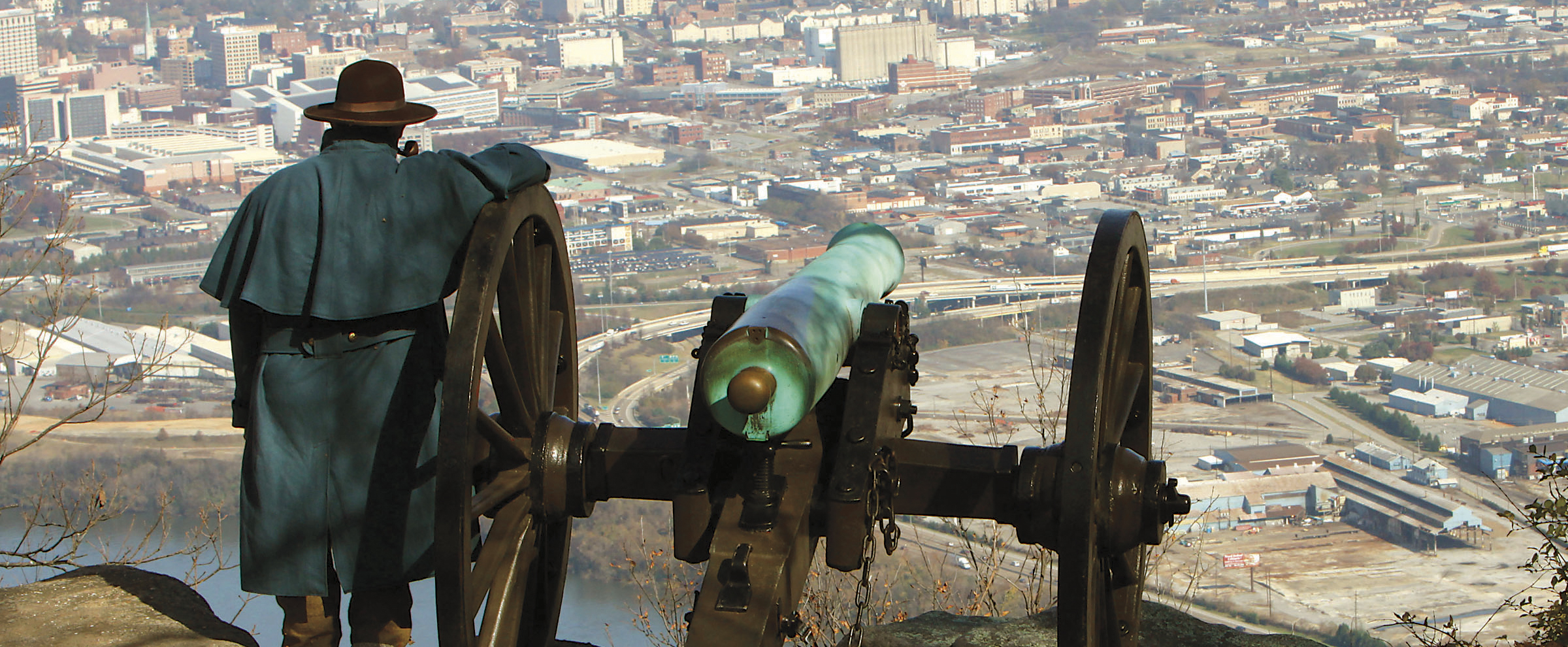Unlike most small and medium-sized cities in the Southeast, Chattanooga has a rather varied history, according to Marlene Payne, deputy director of the Chattanooga History Center.
"There is layer upon layer here," she said. "From the Indian Removal, to the Civil War, to the Industrial movement and then the Renaissance to clean up both the environment and the waterfront. And that's just broad-brush."
Archaeologists have documented American Indian habitation here dating back 10,000 to 12,000.
The earliest residents used the Tennessee River as a trail carved through the Cumberland Plateau to move from coastal lands into the Middle Tennessee, Kentucky and the Midwest, Payne said.
When English colonists pushed into the area, they quickly whittled the land of the Creeks and Cherokees to a fraction of the original 100,000-plus square miles.
By 1838, the United States Army finally enforced a disputed treaty, and the Indian Removal - often called the Trail of Tears - began here at Ross's Landing.
Roughly 16,000 Cherokees and Creeks were removed, and between 2,000 and 8,000 died along the way.
The name of Ross's Landing, too, was removed.
Suggestions of Lookout City and Albion gave way to Chattanooga, the anglicized spelling of a Cherokee word describing the city's most prominent landmark: the "mountain coming to a point." That mountain today is called Lookout Mountain.
Almost immediately, settlers and merchants began focusing their attention on transportation connections between the Tennessee River and Atlantic Ocean. By the 1850s, Chattanooga was a rail-line crossroad.
While the railroads made Chattanooga prosperous, they also made it a military target, according to Jim Ogden, historian for the Chickamauga and Chattanooga National Military Park.
"Almost every community of the Chattanooga area was a battlefield," Ogden has said, adding that 25 principal Civil War engagements occurred in Hamilton, Catoosa and Walker counties.
The Union and Confederate armies fought a massive battle along Chickamauga Creek just south of Chattanooga on Sept. 19th and 20th, 1863. The Confederates pushed Union forces back into their defenses in downtown Chattanooga and strangled them there for nearly two months. Starvation was a real danger for the men and their horses.
Finally in late October, 1,600 Union troops floated dozens of make-shift pontoon boats under cover of darkness around Moccasin Bend. They landed on the Confederate side of the river and captured Brown's Ferry. At the same time, Union troops marched from Stevenson, Ala., into Wauhatchie Valley, freeing the supply line to reinvigorate and send help to the Union Army.
A month later, the Union attacked and defeated Confederate troops stationed on Lookout Mountain and Missionary Ridge.
From that point until the war's end, Chattanooga served as the forward supply depot for Union Gen. William T. Sherman's march to the sea, Ogden said.
The war - and the Union soldiers it transplanted here - helped industrialize Chattanooga. Many, including some wealthy men with backgrounds in coal, iron, textiles and saddleries, moved back.
By 1880, Chattanooga again became a boom town.
Payne said newspapers from the time carried advertisements for suburbs named St. Elmo, Highland Park, and Hill City. In the decades to come, the city became the home of the first Coca-Cola bottling plant.
Moon Pies were born here, and miniature golf was invented on Lookout Mountain. The Lodge Foundry made the iron skillets found in most American homes. Glen Miller's "Chattanooga Choo Choo" became a national hit.
But the same industries and foundries that employed thousands polluted the air and water, Payne said.
In 1969, the newly established Environmental Protection Agency named Chattanooga "America's Dirtiest City," and Walter Cronkite announced the designation in a national news cast.
Payne said the city, at about that same time, began to see factories closed as industries started moving operations overseas.
Facing a failing economy, city leaders sought out innovative thinking.
In the 1980s Chattanooga's public and private leaders began Vision 2000, a master plan to build the city back using its location and natural scenic beauty.
The effort led to the building of the Tennessee Aquarium, and eventually the 21st Century Waterfront.
Today the city's name is again in the news across the country on several "best places to live" lists, Payne said.

